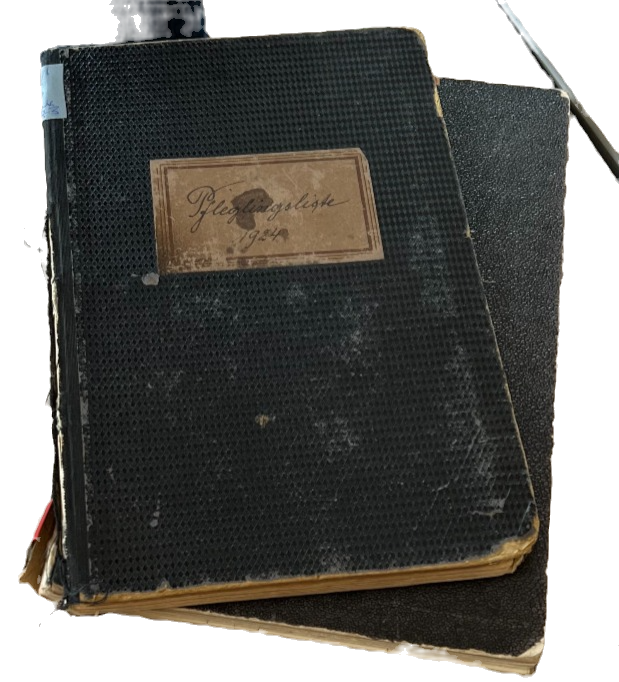
Neinstedter Anstalten, the hospital where Ruth lived from 1931-1934 and then again from 1935-1941, had a huge impact on Ruth's life. Due to the amount of information on Neinstedt, I will have several blogs detailing various aspects of the hospital and how it affected Ruth's life for many years. The most important research find to date is that Neinstedt had Ruth's original documents!! Read on to find out why this is an incredible, rare find.
The hospital was established in 1850 with the intention of helping people with disabilities. Their long history of caring for their patients is documented on their site. Unfortunately for them, and all of Germany, the Nazis came along later with their plans. In 2015, the hospital changed their name to ‘Evangelische Stiftung Neinstedt’.
Will Prunka and I visited Neinstedt in June of 2022. I was very impressed by the hospital and the obvious care they took of the patients that live there. The staff showed us all over the facilities that day and the easy rapport between staff and patients was obvious. We arrived in the morning, were shown the various buildings, including the dorm like facilities where Ruth would have lived, and the areas the patients would have eaten their meals. It was already an emotionally exhausting day, plus Will and I had the additional "pressure" of having a TV crew following us around all day to include Ruth's story in the history of Neinstedt which they just happened to be filming at the time. The documentary is available on their website.
But perhaps the most poignant part of the day came when staffer Natalie Gaitzsch took the time to sit down with us and literally translate Ruth's records that still existed there. To see the original documents detailing many aspects of my great aunt's life was surreal.
No one in our family had ever seen these documents or even knew they existed.

Ruth's individual folder was reaffirmed by other existing documents, including the "Patient List" books.



The reason the find of Ruth's records was so incredible is that patient's records were sent with them when they were transferred from first, the surrendering institution, to the intermediate institution, and finally, to the killing institution. After their extermination at the killing centers, records were forwarded to Berlin where they were catalogued and filed. When the Nazis realized they were losing the war and the Allies were closing in, they destroyed thousands and thousands of the records.
I firmly believe the only reason we have Ruth's records is that she was admitted to Neinstedt two separate times. The 55 pages of records I have copies of are mostly from her first admission, which was April 8, 1931 to May 1934. More detail on the reasons for the two admissions in a later blog post but basically the class Ruth was attending ended in 1934 when she was 14. Her parents readmitted Ruth to Neinstedt when there was a new class created for her needs in 1935. Upon Ruth's transfer to Altscherbitz Hospital on January 29, 1941, her other folder, with the most recent documents, went with her. Those records were almost certainly destroyed.

Comments